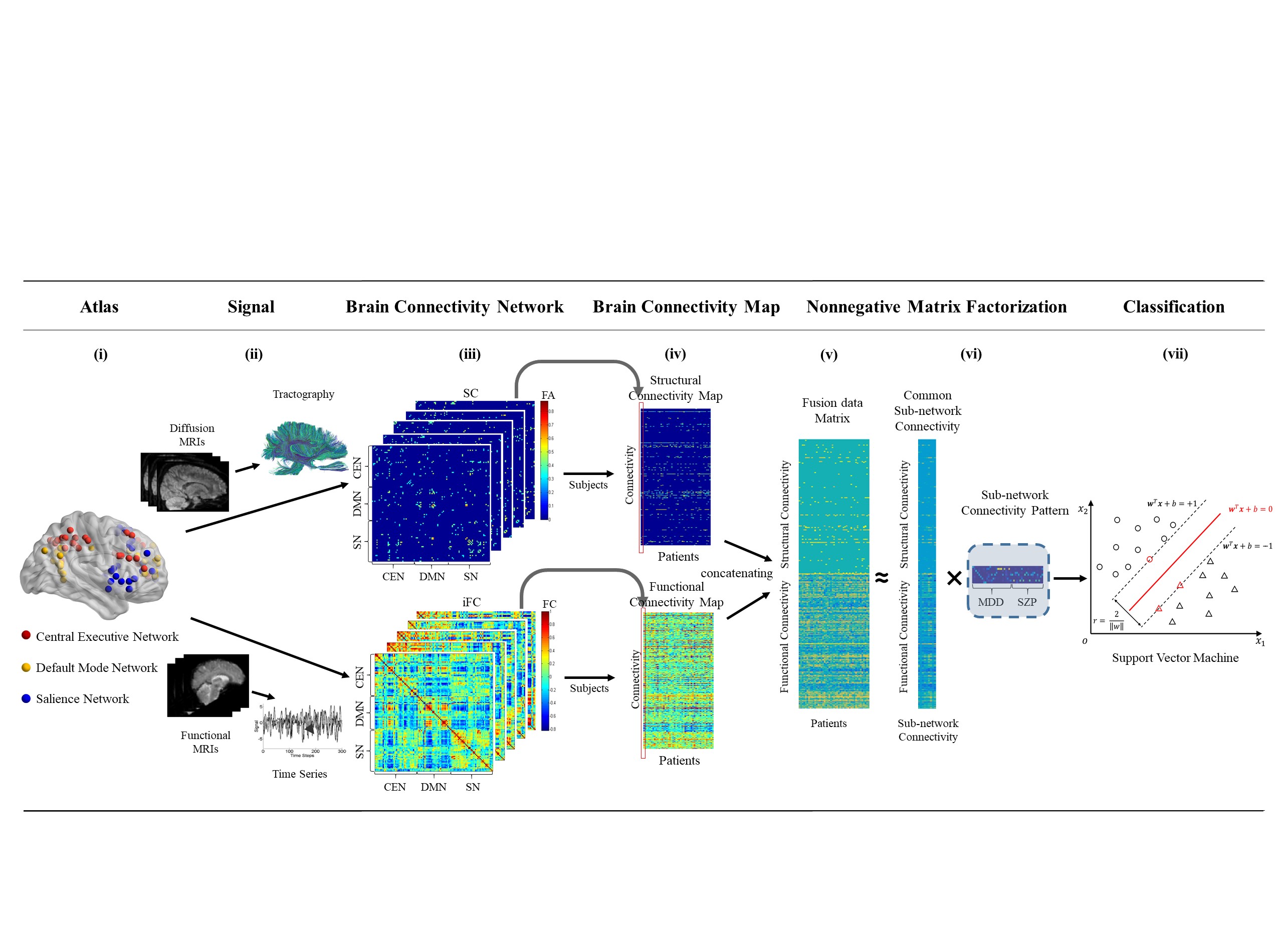Low-rank Network Signatures in the Triple Network Separate Schizophrenia and Major Depressive Disorder

Low-rank Network Signatures in the Triple Network Separate Schizophrenia and Major Depressive Disorder
Abstract
Brain imaging studies have revealed that functional and structural brain connectivity in the so-called triple network (i.e., default mode network (DMN), salience network (SN) and central executive network (CEN)) are consistently altered in schizophrenia. However, similar changes have also been found in patients with major depressive disorder, prompting the question of specific triple network signatures for the two disorders. In this study, we proposed Supervised Convex Nonnegative Matrix Factorization (SCNMF) to extract distributed multimodal brain patterns. These patterns distinguish schizophrenia and major depressive disorder in a latent lowdimensional space of the triple brain network. Specifically, 21 patients of schizophrenia and 25 patients of major depressive disorder were assessed by T1-weighted, diffusion-weighted, and resting-state functional MRIs. Individual structural and functional connectivity networks, based on pre-defined regions of the triple network were constructed, respectively. Afterwards, SCNMF was employed to extract the discriminative patterns. Experiments indicate that SCNMF allows extracting the low-rank discriminative patterns between the two disorders, achieving a classification accuracy of 82.6% based on the extracted functional and structural abnormalities with support vector machine. Experimental results show the specific brain patterns for schizophrenia and major depressive disorder that are multi-modal, complex, and distributed in the triple network. Parts of the prefrontal cortex including superior frontal gyri showed variation between patients with schizophrenia and major depression due to structural properties. In terms of functional properties, the middle cingulate cortex, inferior parietal lobule, and cingulate cortex were the most discriminative regions.